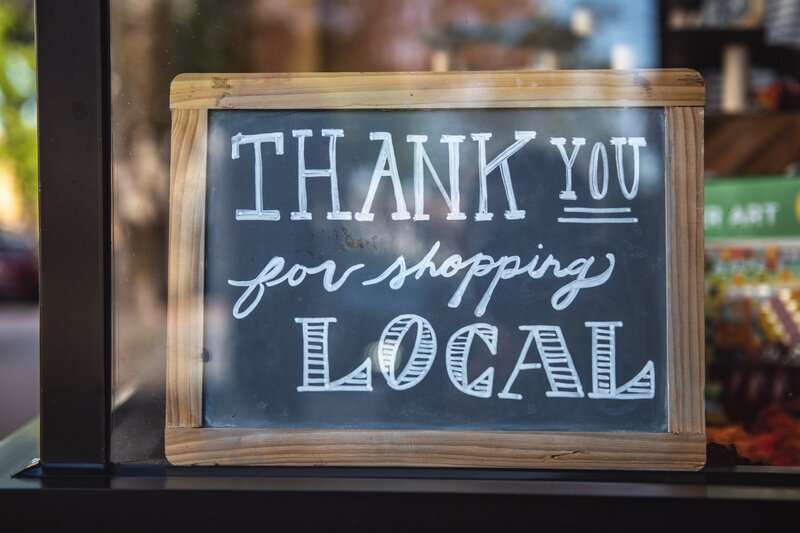COVID-19 is Accelerating Digital Transformation for SMBs
Oct 07, 2020 Kate Riley
Small and Midsize Businesses (SMBs) make up 48% of the U.S. economy and employ 60 million people according to McKinsey. They are the lifeblood of our economy and continue to bear the biggest impacts of COVID-19 as they scramble to adapt their operations to changing guidelines and customer expectations and behavior. Gyms, retail stores, restaurants, local service providers, salons - they’re all navigating through a new world of customer experience. A world of contactless or safely managed customer service and sales, with a sudden shift to remote work, decreased number of employees and the changing business requirements at the local level, which have all created uncertainty of what’s to come.
As a result, they’ve had to rethink their approaches and the technology they use to meet the needs of their customers while also reducing costs. The good news is that even before COVID-19 we were seeing a wave of innovation to help small businesses digitize and compete in this increasingly online world. While the pandemic may have accelerated these trends faster than anyone could expect, SMBs now have more opportunity and options than ever to adapt to the uncertain economy and changing customer needs we can expect for the foreseeable future.
We know that we will not go back to ‘business as usual,’ but there are tools to help these SMBs stay in business. Here are some of the technology platforms we see helping SMBs remain resilient to the changes that are happening and are still to come:
E-commerce and Operations
The pandemic has turned every retailer into an e-commerce business. Whether it’s online ordering for in-store pickup or better shipping options, local retailers are no longer able to rely solely on foot traffic for sales. They suddenly need better digital storefronts, payment options, shipping solutions and back-office management tools that improve efficiency while lowering costs.
- Shipping and logistics platforms can lower costs and help scale operations to accommodate the increased shipping volumes. Companies like Shippo and AfterShip make it much easier to manage package labeling and optimize shipping options for speed and cost, especially when it comes to managing returns and exchanges.
- Digital commerce and payment solutions like Shopify, Square and Stripe offer solutions to digitally manage and track sales and transactions.
- For restaurants in particular, Presto offers a totally contactless menu, ordering and payment solution using QR codes.
Marketing Tools
The pandemic has changed customer expectations for how they interact with the brands and businesses they love. As businesses adapt to new and evolving requirements, customers need to understand how business operations have changed, what safety protocols have been implemented and how or where they can engage with the business’ products or services. Easy-to-use and smartly designed marketing platforms are key to scaling the ability to reach customers and encourage their patronage and loyalty - especially as the holiday season approaches.
- Email marketing tools like Zoho Campaigns offer great email editing, contact management, auto-responses and more. MailChimp and HubSpot are other popular leaders in the space.
- Social media tools like Sprout Social and Hootsuite provide low cost ways to foster relationships with a company’s community of customers as well as catch the attention of new customers.
- Design app Canva has thousands of templates, stock images and easy-to-use editing tools that companies can use to create custom graphics that will elevate brand presence on social media.
Customer Service
Strong customer service can be more difficult to deliver when a business is unable to safely engage customers face-to-face. Many businesses are adapting their services to offer personalized phone consultations or provide different and more convenient customer service contact options via text, online chat or voice.
- Aircall provides a modern, cloud-based phone system to help small businesses better manage customer service inquiries and improve employee communication and productivity.
- LiveChat integrates chat capabilities into a website to support e-commerce inquiries and IT service activities.
Financial Support
The Paycheck Protection Program provided a much-needed runway for many small businesses fighting for survival during the earliest days of the pandemic. It’s unclear what the months ahead will bring as fear of the virus and economic headwinds continue to shape consumer buying habits. New financing options are growing in popularity as a way to help businesses survive the months ahead.
- Clearbanc offers founders financing that is repaid as a percentage of sales while Kabbage offers flexible financing options specifically designed to help small businesses (and was one of the biggest PPP lenders by application volume). Shopify and Square are also getting into the game, all of which gives businesses an extra lifeline at a time when they may need a little extra help.
Small and midsize businesses are the heartbeat of our economy and will be critical to our recovery in the months ahead. Yet even as they face an incredibly challenging time, the necessity of survival is leading to innovation and adaptation. How SMBs respond will lead to lasting changes to the way we all shop, experience and patronize our local businesses.






